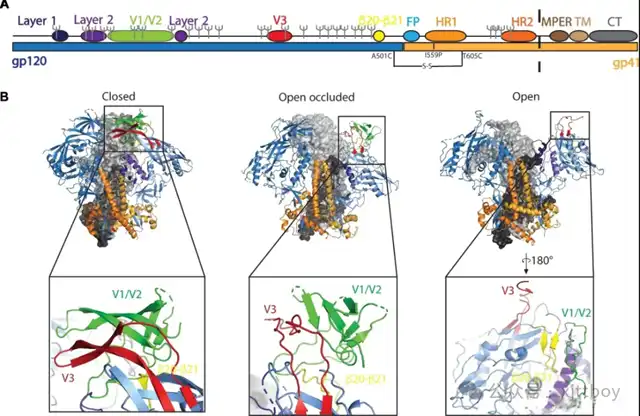Researchers Discover Key Factor in Preventing HIV Infection
- Normal Liver Cells Found to Promote Cancer Metastasis to the Liver
- Nearly 80% Complete Remission: Breakthrough in ADC Anti-Tumor Treatment
- Vaccination Against Common Diseases May Prevent Dementia!
- New Alzheimer’s Disease (AD) Diagnosis and Staging Criteria
- Breakthrough in Alzheimer’s Disease: New Nasal Spray Halts Cognitive Decline by Targeting Toxic Protein
- Can the Tap Water at the Paris Olympics be Drunk Directly?
Researchers Discover Key Factor in Preventing HIV Infection
- Should China be held legally responsible for the US’s $18 trillion COVID losses?
- CT Radiation Exposure Linked to Blood Cancer in Children and Adolescents
- FDA has mandated a top-level black box warning for all marketed CAR-T therapies
- Can people with high blood pressure eat peanuts?
- What is the difference between dopamine and dobutamine?
- How long can the patient live after heart stent surgery?
Researchers Discover Key Factor in Preventing HIV Infection
When the HIV virus “docks” onto human cells and injects its lethal genetic code, there is an extremely brief buffering period before a small section on its surface suddenly opens up, initiating the infection process.
Observing this structure open and close within a mere millionth of a second, researchers at Duke Human Vaccine Institute (DHVI) have provided a new avenue on the virus’s surface, potentially leading to the development of antibodies for an HIV vaccine. Their findings were published in the February 2 issue of the journal “Science Advances.”
The ability to specifically attach antibodies to this small structure to prevent its sudden opening will be crucial.

HIV-1 Env glycoprotein is structurally dynamic
The moving part is a structure called the envelope glycoprotein, which HIV researchers have been trying to understand for years, as it is a critical part of the virus’s ability to dock with a receptor called CD4 on T cells. Many parts of the envelope continually move to evade the immune system, but vaccine antigens are designed to remain relatively stable.
Lead author, structural biologist, and Associate Professor of Medicine at DHVI, Rory Henderson, stated, “Everything we know about what people have done to stabilize [this structure] has not worked. It’s not that they’ve done anything wrong; it’s just that we didn’t know they would move like this.”
Postdoctoral researcher and study co-author Ashley Bennett added, “When the virus is looking for the best attachment point on human T cells, the host cell’s CD4 receptor is the first thing it attaches to. This connection then triggers the envelope structure to pop out, exposing the co-receptor binding site, which is the really important event.”
Rory Henderson continued, “Once both molecules of the virus are bound to the cell membrane, the process of injecting virus RNA can begin, and if it enters the cell, your infection is permanent.”
Ashley Bennett noted, “If you’re infected, you’ve already lost the game, because it’s a retrovirus.”
They found that the moving structure they discovered can protect sensitive co-receptor binding sites on the virus.
Rory Henderson said, “It’s also a latch that can prevent it from popping up until it’s ready to do so, and locking it with specific antibodies can block the infection process.”
To observe virus portions in open, closed, and intermediate states, Rory Henderson and Ashley Bennett used an electron accelerator at the Argonne National Laboratory outside Chicago, which generates X-ray wavelengths capable of resolving objects as small as single atoms. However, demand for this expensive shared facility is high. HIV researchers secured three 120-hour time slots on the synchrotron accelerator to try to gather as much data as possible in a marathon session.
Ashley Bennett commented, “Basically, you just keep doing this until you can’t do it anymore.”
Earlier research elsewhere suggested antibodies were designed against the wrong shape of the virus, but this study suggests otherwise.
Rory Henderson explained, “The question is, ‘Why, when we immunize, do we make antibodies where they should be blocked?’ Part of the answer should lie in this particular structure and its deformations. The interaction between antibody binding and shape is crucial for the work we do. This led us to design an immunogen the day the first experiment came back. We think we know how it works.”
Researchers Discover Key Factor in Preventing HIV Infection
Reference:Bennett,A.L.,etal.(2024)MicroseconddynamicscontroltheHIV-1Envelopeconformation.ScienceAdvances.
(source:internet, reference only)
Disclaimer of medicaltrend.org
Important Note: The information provided is for informational purposes only and should not be considered as medical advice.



